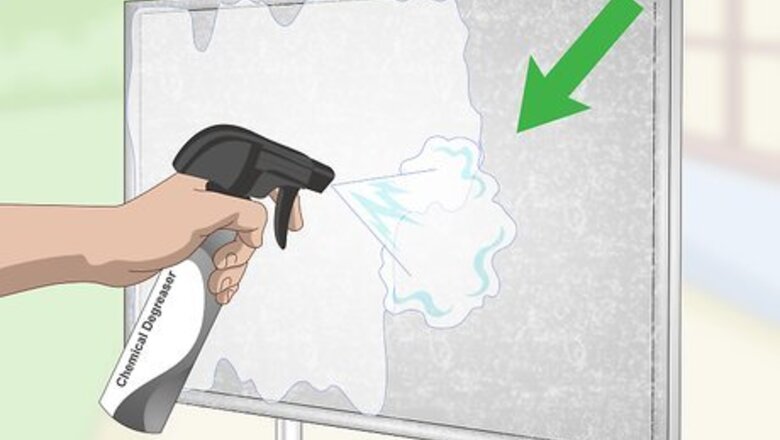
views
Prepping the Surface
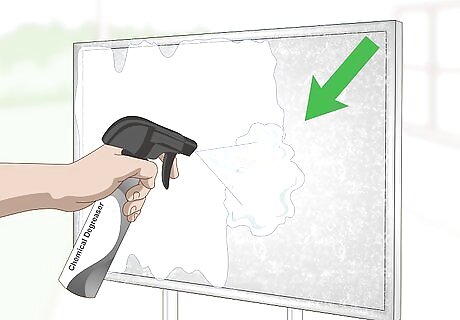
Clean the steel with a chemical degreaser. Spray the surface with the solution, then scrub it with a clean, lint-free cloth. A powerful degreaser will cut through dirt, grime, mold, and other problematic residue without affecting the temperamental zinc coating. Proceed in small sections until you’ve cleaned the entire surface. Common household products like Comet, mineral spirits, and chlorine bleach can all be used to prepare galvanized steel for painting. If you’re attempting to paint siding panels, roof flashing, or other materials that have seen exposure to the elements, a thorough cleaning is necessary to eliminate any organic contaminants from the outer surface.
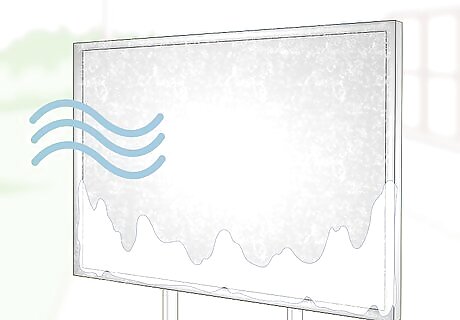
Allow the surface to dry. Once you’ve finished cleaning the steel, let it rest until all traces of the degreaser have evaporated. That way, you won’t have to worry about the solution interfering with the action of the vinegar, which you’ll be using to rough up the smooth steel. If possible, do your prepping and painting indoors, or on a clear day when there’s little moisture in the environment.
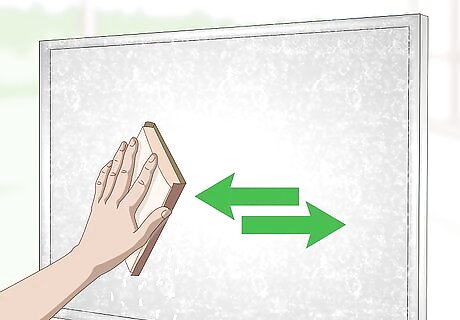
Scour older galvanized steel lightly to remove white rust, dust, and oil. When working with an item that’s seen some wear, you may noticed a chalky or powdery film on parts of the surface. This can easily be buffed out with a high-grit sandpaper (120-grit or finer is preferable) and a little patience. Sand the steel using gentle circular motions until the exterior takes on a uniform appearance. Afterwards, wipe the surface with a cloth dampened with warm water to remove any lingering dust.< This chalky substance is commonly known as “white rust.” It forms when the thin layer of zinc coating the steel begins to break down as a result of age or exposure to the elements.
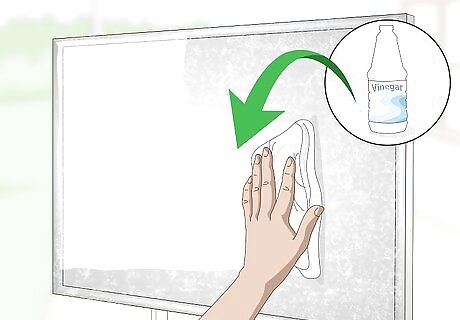
Wipe down the steel with vinegar. Go over the galvanized steel thoroughly, applying more vinegar as needed. To ensure an even paint job, it’s important that it come into contact with every part of the exterior. The acid in the vinegar will gently etch the slick zinc-coated finish, giving it a rougher texture that will allow paint to stick better. If you happen to miss a spot, you may end up with splotchy, peeling paint.
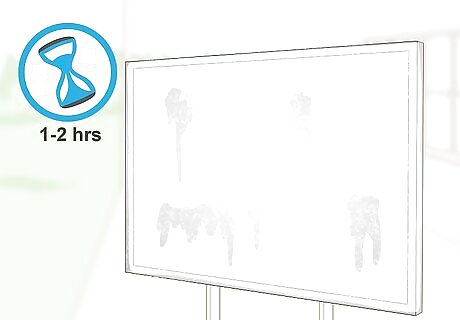
Leave the vinegar to act for 1-2 hours. This will give it plenty of time to eat away at the galvanized surface. The longer it sits, the more pronounced the etching effect will be, and the better your paint will adhere. You might even let it work overnight if the timeframe for your project allows. If you’re short on time, wait until the surface is dry to the touch before moving on to priming and painting.
Priming and Painting the Steel

Apply a latex-based primer. Brush or spray the primer onto the prepped steel surface. Work in small sections, aiming for even coverage. Make sure there are no gaps or thin spots that might cause an issue later on when it comes time to paint. For maximum hold and durability, choose a multipurpose latex primer that’s designed for exterior use. If the steel is destined for rough industrial or outdoor conditions, consider upgrading to a high-performance epoxy primer. Epoxy primers offer a semi-permanent hold, and are resistant to scratching, chipping, and peeling.
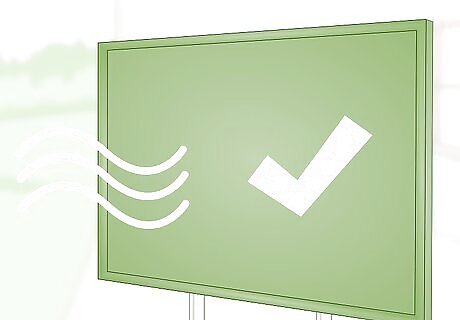
Let the primer dry completely. This may take anywhere from 2-6 hours, depending on the product used. To test whether the primer is ready to accept paint, run the pad of your finger over the surface. If it feels tacky, it needs to dry a little longer. Applying paint to wet primer will hinder its ability to stick.
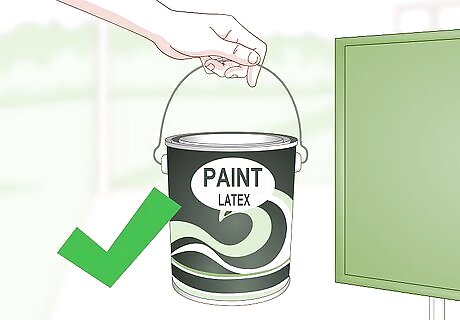
Choose the right paint. In most cases, a standard latex paint formulated for exterior use will get the job done. These are readily available at most home improvement centers and hardware stores. Avoid using alkyd-based paints (such as spray paint) on galvanized steel. For the most dependable results, look for paints that are formulated specifically to bond to galvanized steel. The enamels in alkyd paints can react with the slick zinc finish on a galvanized steel surface, leading to poor adhesion and peeling.
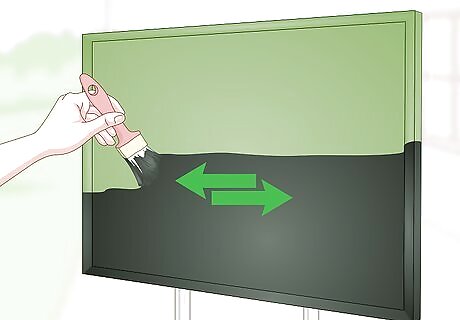
Brush on the first coat of paint. Spread the paint across the surface with long, linear strokes. Use the tip of your brush to dab the paint into grooves, creases, and textured areas. Check to make sure there are no gaps or missed spots before moving on. A roller may come in handy for applying paint to broad surfaces like siding and roof panels.
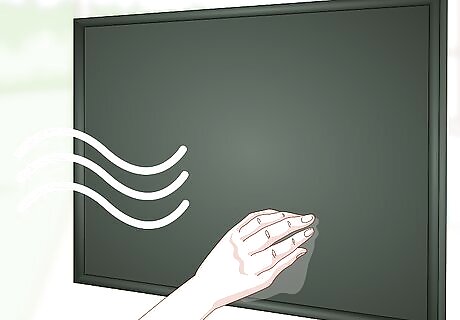
Allow the base coat to dry to the touch. It will typically take 3-4 hours before the surface is ready to accept another coat. In the meantime, avoid handling the fresh paint. Doing so may leave behind smudges or creases in the completed finish. Expect drying times to be longer in warm, humid conditions.

Follow up with a second and final coat. Two coats will usually be enough for the majority of projects. Apply the topcoat the same way you did the first. Take your time to ensure that there are no inconsistencies in the topcoat—any imperfections may be visible once the paint has dried. Indirect airflow from a box fan or air conditioning unit may help the topcoat set up faster. Once the topcoat is dry, you can go ahead and install the piece or put it to its intended use.
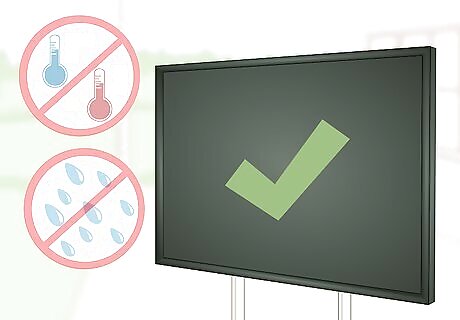
Limit the paint’s exposure as it cures. Though most latex-based paints dry in a matter of hours, it can take them a few weeks (or as long as a month, in some cases) to fully harden. If possible, avoid subjecting the steel to stress and wear like pressure, heavy precipitation, or drastic fluctuations in temperature until then. At that point, it will be ready to take whatever you can throw at it. When properly applied, the paint job on your galvanized steel will enjoy a long lifespan and be more resilient to extreme conditions.




















Comments
0 comment